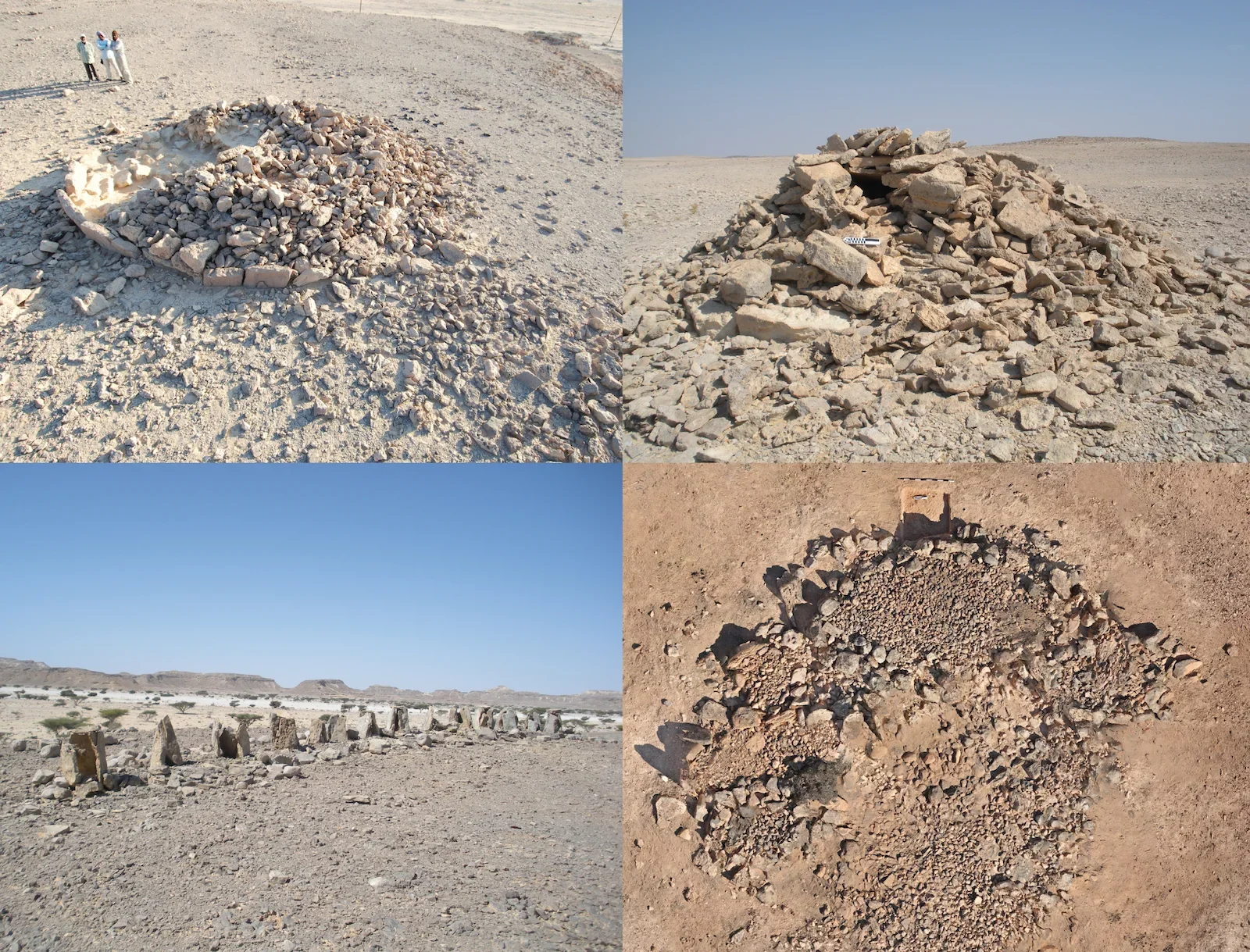South Arabia’s Ancient Pastoralists
Archaeological monuments in Dhofar
This paper, titled "South Arabia’s prehistoric monument landscape shows social resilience to climate change," explores how ancient pastoralists in the Dhofar region of Oman adapted their monument-building practices over 7,000 years in response to a changing climate.
Our study found that during the Holocene Humid Period, a time when the region was much wetter, larger groups of people lived in closer proximity. The monuments they built, such as large platforms with heavy stones, reflected this social structure. They were big projects, likely built in a single effort by many people, and served as central gathering places for the community.
However, as the climate grew increasingly arid, the population became more dispersed. The monument-building practices shifted to accommodate this change. Instead of large-scale, single-event constructions, people began building "accretive monuments" like triliths. These were smaller and built over time by individuals or small groups, with each person adding their own piece.
We argue that these monuments were a key part of the herders' "social resilience." The monuments served as "touchstones" that helped people maintain social connections and a sense of shared identity, even when they were spread out and rarely saw each other. They also served a practical purpose, possibly communicating important information about the environment, such as the location of springs or travel routes. In this way, the monuments were a flexible tool that allowed these ancient societies to adapt and survive in a challenging and changing world.
Read more: https://doi.org/10.1371/journal.pone.0323544

